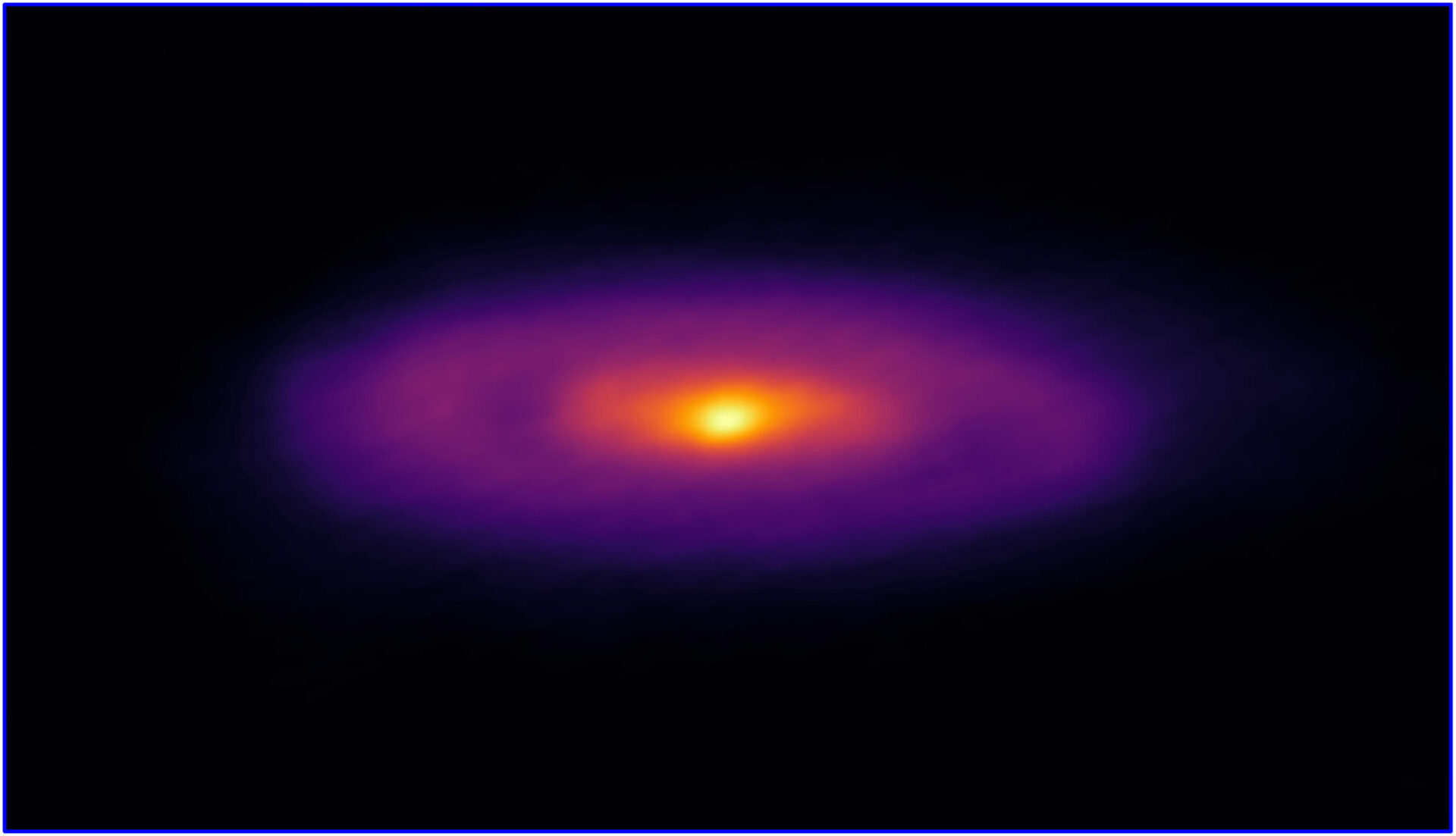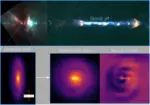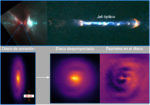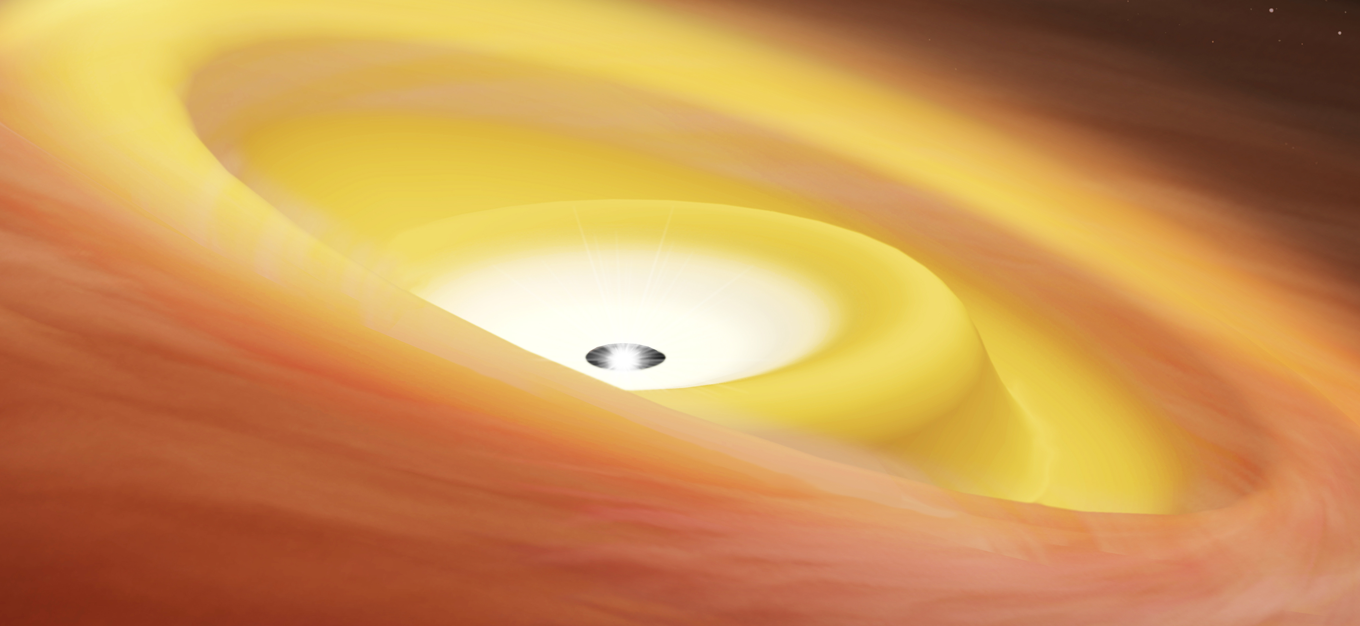Feeding a Baby Star Through a Whirlpool in Space
Astronomers using the Atacama Large Millimeter/submillimeter Array (ALMA) detected a pair of spiral arms in an accretion disk around a baby star. Interestingly, these spiral density enhancements make the disk appear like a “space whirlpool.” The finding supports current theories of accretion disk feeding process, and potentially brings critical insights into the processes of grain growth and settling that are important to planet formation. These results appear in an article in Nature Astronomy led by Chin-Fei Lee at Academia Sinica Institute of Astronomy and Astrophysics (ASIAA, Taiwan).
“Thanks to the resolving power of ALMA, we finally detected a pair of spirals in a young accretion disk around a baby star. These spirals, long predicted in theory, play a crucial role in the transport of angular momentum. Which allows disk material to swirl towards the baby star”, says Lee with excitement. “Our detection of the spirals is an important milestone in understanding the feeding process of baby stars.”
Spirals detected in protoplanetary disks around somewhat older stars seem to be produced by interaction with unseen baby planets. Unlike those, the spirals here are induced by accretion of material from the surrounding molecular cloud onto the disk.
The protostar with its disk lies at the center of HH 111, a pair of supersonic jets emerging from a molecular cloud core located 1300 lightyears away in the constellation Orion. The protostar is about half a million years old, just one ten-thousandth the age of our Sun, and has a mass 50% greater than our Sun. A portion of the flow through the disk onto the budding star is diverted to form the spectacular jets. Previous observations with a resolution of 120 AU (An astronomical unit – AU – is the average distance from the Earth to the Sun) detected the accretion disk orbiting the protostar out to a radius of 160 AU. The new observations with ALMA have a resolution of 16 AU, almost eight times better. With this outstanding capability, astronomers were able to resolve the disk spatially. They detected a pair of spiral arms by the glow of thermal emission from dust particles concentrated there (Figure 1).
The team’s observations open up the exciting possibility of detecting spiral structures in the accretion disks around protostars through high-resolution and high-sensitivity imaging with ALMA, which allows studying accretion disk feeding processes in depth. Such observations also provide insight into accretion disks around other kinds of astrophysical objects, including the supermassive black holes found at the center of active galaxies.
Additional information
This research was presented in a paper “Spiral Structures in an Embedded Protostellar Disk Driven by Envelope Accretion,” by Lee et al. to appear in Nature Astronomy.
The team is composed of Chin-Fei Lee (ASIAA, Taiwan; National Taiwan University, Taiwan), Zhi-Yun Li (University of Virginia, USA), and Neal J. Turner (JPL/Caltech, USA).
The Atacama Large Millimeter/submillimeter Array (ALMA), an international astronomy facility, is a partnership of the European Organisation for Astronomical Research in the Southern Hemisphere (ESO), the U.S. National Science Foundation (NSF) and the National Institutes of Natural Sciences (NINS) of Japan in cooperation with the Republic of Chile. ALMA is funded by ESO on behalf of its Member States, by NSF in cooperation with the National Research Council of Canada (NRC) and the Ministry of Science and Technology (MOST) and by NINS in cooperation with the Academia Sinica (AS) in Taiwan and the Korea Astronomy and Space Science Institute (KASI).
ALMA construction and operations are led by ESO on behalf of its Member States; by the National Radio Astronomy Observatory (NRAO), managed by Associated Universities, Inc. (AUI), on behalf of North America; and by the National Astronomical Observatory of Japan (NAOJ) on behalf of East Asia. The Joint ALMA Observatory (JAO) provides the unified leadership and management of the construction, commissioning, and operation of ALMA.
Images
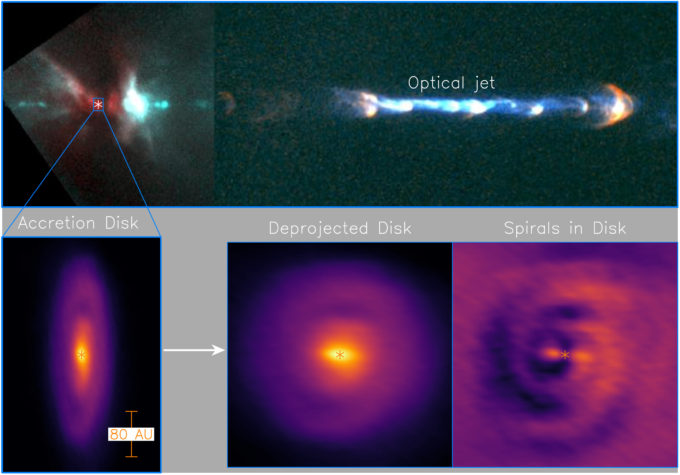
(Top) Optical image of the jet in the HH 111 protostellar system taken by the Hubble Space Telescope (Reipurth et al. 1999). (Bottom left) Accretion disk detected with ALMA in dust continuum emission at 850 micron. (Bottom middle) The disk turned (de-projected) to be face-on, showing a pair of faint spirals. (Bottom right) Annularly averaged continuum emission is subtracted to highlight the faint spirals in the disk. Credit: ALMA (ESO/NAOJ/NRAO)/Lee et al.
Contacts
-
Nicolás Lira
Education and Public Outreach OfficerJoint ALMA Observatory, Santiago - ChilePhone: +56 2 2467 6519Cel: +56 9 9445 7726Email: [email protected] -
Masaaki Hiramatsu
Education and Public Outreach Officer, NAOJ Chile -
Iris Nijman
News and Public Information ManagerNational Radio Astronomy Observatory Charlottesville, Virginia - USACel: +1 (434) 249 3423Email: [email protected] -
Mariya Lyubenova
ESO Outreach Astronomer
